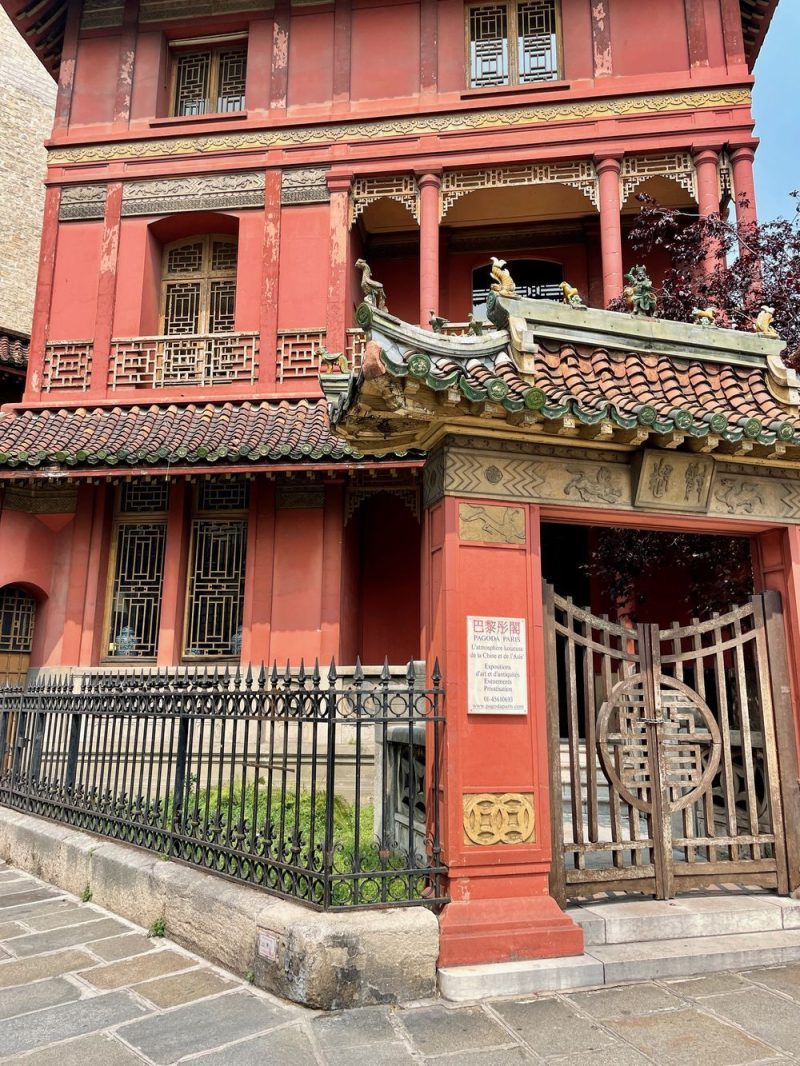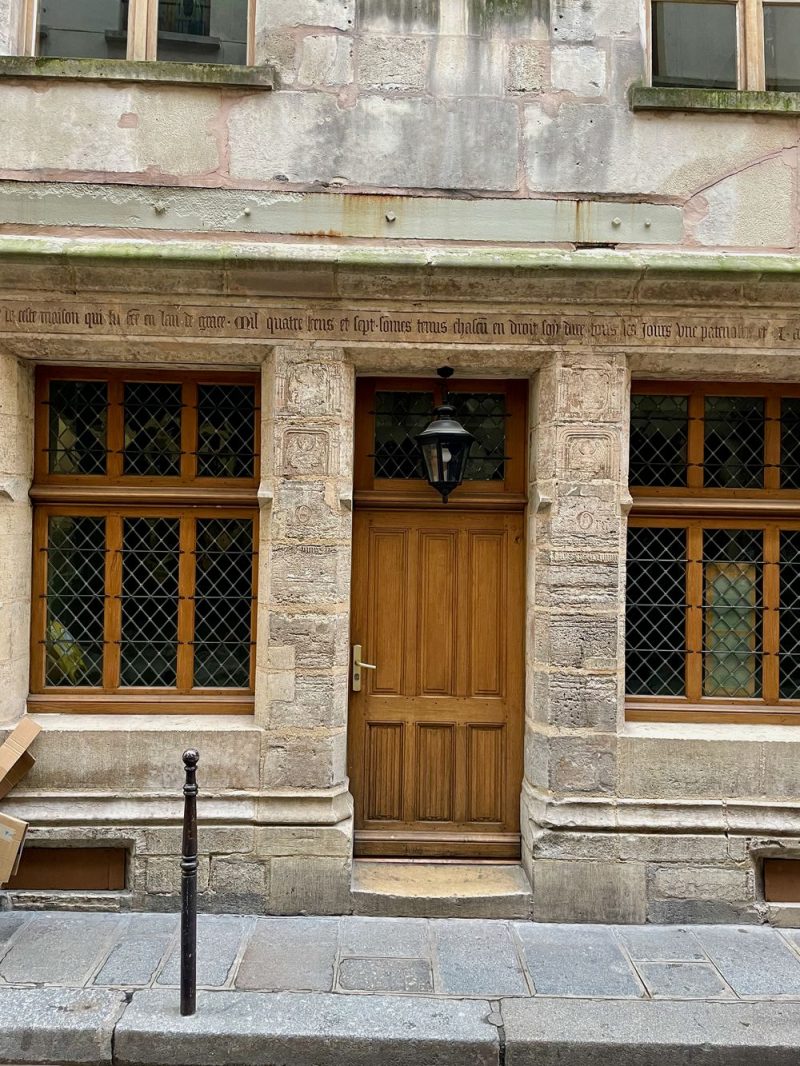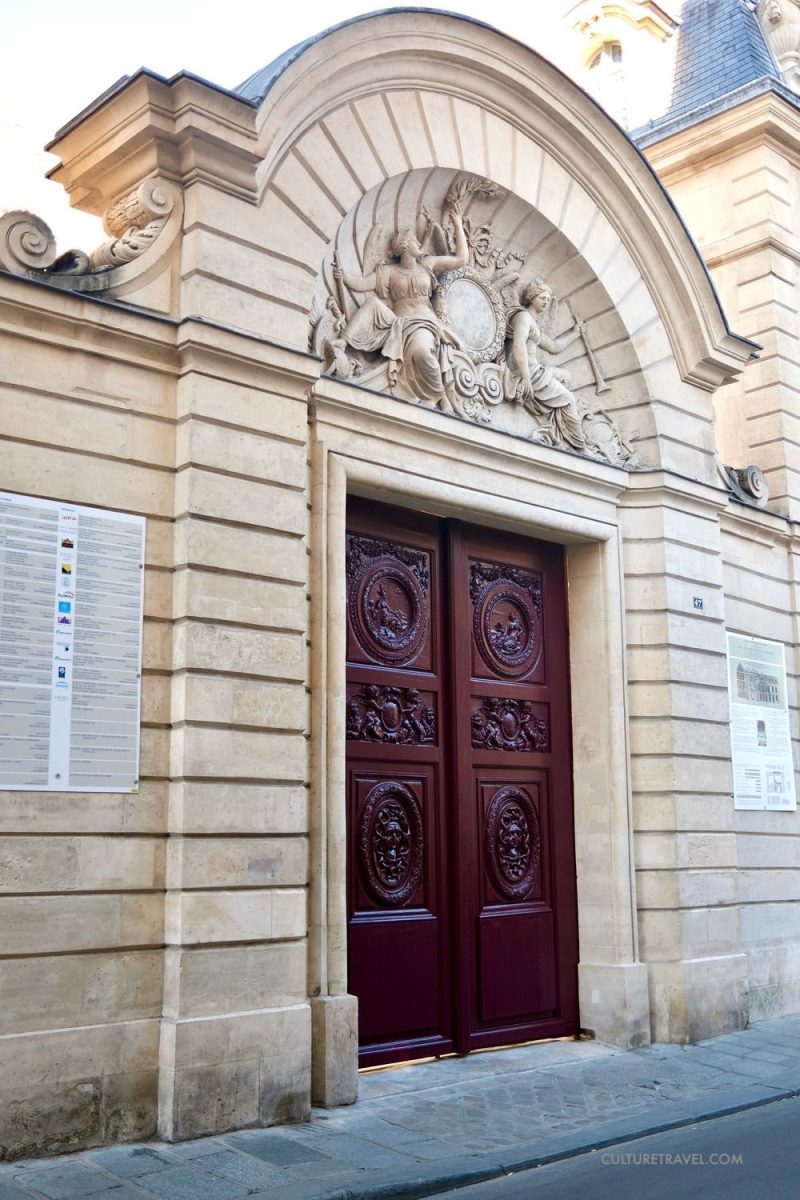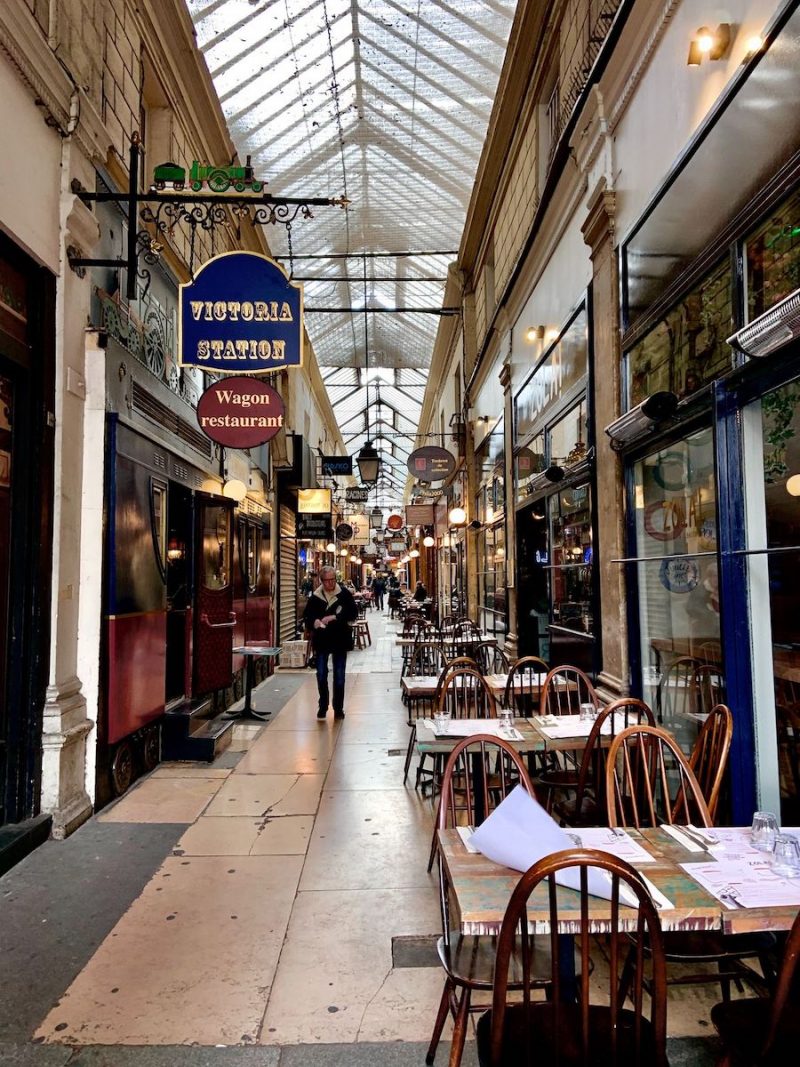Paris Architecture: 12 Notable Styles and the History Behind Them
Culture Travel may earn a commission through links on this website. As an Amazon Associate, we earn from qualifying purchases.
Paris is renowned as one of the most beautiful cities in the world, and much of that beauty stems from its iconic architecture. The cityscape of Paris is filled with instantly recognizable buildings that exemplify diverse architectural styles, from the medieval Gothic Notre Dame cathedral to the postmodern glass pyramids of the Louvre.
If you’re curious about the city’s architectural landscape, I’ll provide an overview of some of the most striking architectural gems of Paris. We’ll tour relics of the city’s ancient Gallo-Roman origins, stroll past opulent palaces built for kings, and gaze up at grand avenues lined with stately Haussmann buildings. From the Eiffel Tower to the Arc de Triomphe, I’ll highlight Paris’ famed monuments and trace their architectural histories.
You’ll also discover some lesser-known yet equally impressive structures, like the art nouveau metro station entrances designed by Hector Guimard. Through this virtual walking tour of Paris’ greatest architectural hits, you’ll gain insight into the city’s past and present through the lens of its built environment. So come along as we explore how architecture helps shape the culture, identity, and allure of the magical City of Light.
Roman Ruins
Among Paris’s architecture is the presence of Roman ruins, which hark back to when Paris, known as Lutetia during the Roman era, was under Roman rule from the 1st century BC to the 4th century AD. These are mostly found in the Latin Quarter, in the 5th arrondissement of Paris.
The most notable Roman remnant in Paris is the Arenes de Lutece. This amphitheater, built in the 1st century AD, could house approximately 15,000 spectators and was used for gladiatorial combats and theatrical performances. Its semi-circular arrangement has remnants of the original seating areas and stage.
Another significant Roman structure in Paris is the Thermes de Cluny, a Gallo-Roman thermal bath complex. This site, dating back to the 3rd century, exhibits well-preserved ruins including the frigidarium (cold room), with its tall, vaulted ceilings and grand pillars, reflecting the Roman architectural prowess of the time.
In addition to these, fragments of the Roman city wall can be seen at various locations in Paris, including near the Musée de Cluny. These structures were typically built using limestone and feature robust and sturdy construction, indicative of Roman engineering techniques.
Roman ruins in Paris serve as precious windows to the city’s ancient past, illustrating a period when Roman architecture and engineering played a vital role in the development of Lutetia, the precursor to modern Paris.
Medieval Architecture
In the aftermath of the Roman era, Paris transitioned into the Medieval period, spanning roughly from the 5th to the 15th century. This era saw the rise of a distinctive form of architecture that is evident in various structures across the city.
One of the quintessential examples of Medieval architecture in Paris is Notre Dame Cathedral, an iconic structure that commenced in the 12th century and completed in the 13th century. This cathedral showcases the Gothic architectural style that emerged during the Medieval period.
Another remarkable Medieval structure is the Basilique Saint-Denis, a large medieval abbey church in the city’s suburbs. It holds a significant place in the history of architecture as it is considered the first major structure built in the Gothic style, marking a departure from the Romanesque style prevalent during the early Medieval period. The basilica features tall pointed arches, large windows adorned with beautiful stained glass, and a façade decorated with sculptures depicting various biblical scenes.
Furthermore, the Medieval period in Paris saw the building of fortified city walls, with remnants still visible in some parts of the city. The walls were erected to protect the city from potential invasions and were constructed using robust stones, showcasing the sturdiness and defensive character of Medieval architecture.
Middle Ages Architecture
Middle Ages architecture in Paris, also referred to as Medieval architecture, flourished roughly between the 5th and the 15th century. It is predominantly marked by the transition from Romanesque to Gothic architectural styles.
In the early Middle Ages, Romanesque architecture prevailed, characterized by rounded arches, thick walls, and sturdy pillars. Structures like old churches and fortifications from this period exhibit a robust and somewhat bulky appearance, with smaller windows compared to later periods.
As the Middle Ages progressed, Gothic architecture emerged and became predominant, particularly visible in the many cathedrals and churches constructed during this period.
During this period, defensive structures such as fortified walls and towers were also common, showcasing the necessity for protection and military readiness prevalent in the Middle Ages.
Gothic Architecture
Gothic architecture in Paris is a style that flourished during the High and Late Middle Ages, roughly from the 12th to the 16th century. This architectural style is known for its towering structures, delicate details, and its break from the Romanesque tradition that preceded it.
One of the prime examples of Parisian Gothic architecture is the Notre Dame Cathedral. This historic edifice, begun in the 12th century and completed in the 13th, embodies the hallmarks of Gothic architecture with its pointed arches, rib vaults, high ceilings, and intricate sculptures. The use of flying buttresses, a significant innovation of this period, allowed for greater height and stability, while also creating space for large, majestic windows. The façade of Notre Dame also features intricately designed sculptures and gargoyles, a hallmark of Gothic artistry.
Another notable Gothic structure is the Sainte-Chapelle, situated within the Palais de la Cité. Built in the 13th century, it is renowned for its remarkable height and a profusion of stunning stained glass windows that engulf the interior in a kaleidoscope of light and color. These windows, depicting biblical narratives, are a testament to the Gothic emphasis on visual storytelling and using light as a spiritual element.
Gothic architecture in Paris can be identified by its rib vaults, which permitted the construction of taller buildings with more expansive interiors. The emphasis on verticality is accentuated by towering spires and slender columns, creating a perception of reaching towards the heavens, a characteristic aesthetic of the Gothic style.
The façade of Gothic buildings often features ornate detailing, including gargoyles and chimeras, both serving as decorative elements and functional water spouts.
In conclusion, Gothic architecture in Paris has significantly influenced the city’s landscape, making Paris a venerable repository of Gothic architectural wonders.
Renaissance Architecture
During the Renaissance period, roughly spanning the 14th to the 17th centuries, Paris experienced a transformative shift in its architectural landscape. This era, characterized by a revival of classical Greek and Roman art and intellectual traditions, brought a new flourish of architectural developments to Paris.
The Louvre Palace underwent significant renovations in the Renaissance style. Initially a medieval fortress, it was transformed into a royal palace with distinct Renaissance features, including classical columns, pilasters, and intricate sculptures that exhibit a balance between form and function. The ornate detailing and symmetrical facades are testaments to the artistic and architectural advancements of the time.
Another prominent example of Renaissance architecture in Paris is the Hôtel de Ville, the city’s town hall. Though the current structure is a 19th-century reconstruction, its design reflects the Renaissance style, showcasing embellished facades with sculptures, pilasters, and classical columns which are characteristic of the Renaissance’s emphasis on harmony and proportion.
Place des Vosges, originally known as Place Royale, is a quintessential example of Renaissance urban planning. Built by King Henri IV in the early 17th century, this square is marked by uniformity in the design of the buildings surrounding it, featuring red-brick facades, steep slate roofs, and large, symmetrically placed windows, embodying the Renaissance principles of order and symmetry.
Moreover, numerous private mansions, known as “hôtels particuliers,” were completed during this time. These buildings, often built for the nobility, featured ornamental gates, courtyards, and gardens, exemplifying the elegant grandeur of Renaissance design.
The Renaissance architecture in Paris denotes a period of renewed interest in classical ideals of beauty, symmetry, and proportion. Through the incorporation of classical elements and a focus on harmonious design, this period marked a significant departure from the Gothic style, paving the way for the architectural advancements that characterized the subsequent centuries in Paris’ evolving landscape.

Baroque Architecture
The Baroque period, spanning the 17th and 18th centuries, brought a distinctive style of architecture to Paris, characterized by grandiosity, intricate details, and an emphasis on theatricality and opulence. This era witnessed the rise of elaborate and monumental structures that showcased the prowess and grandeur of the ruling class.
A prominent example of Baroque architecture in Paris is the Palais Garnier, an opera house constructed in the late 19th century that embodies the Baroque spirit with its lavish and ornamental design. It features a richly decorated marble grand staircase, Marc Chagall-painted ceiling, and a facade adorned with columns, busts, and sculptures, manifesting the extravagant characteristics of Baroque architecture.
In the 7th arrondissement, the Les Invalides complex was initially built as a hospital and retirement home for war veterans. It later incorporated the Dôme des Invalides, a chapel with a gilded dome, and a mausoleum holding the remains of prominent French war heroes, including Napoleon Bonaparte. The dome, with its intricate decorations and lavish use of gold, epitomizes the grandiosity associated with the Baroque style.
The Palais-Royal, built in the 17th century, is another epitome of Baroque architecture. Initially, a royal palace, it features a grand courtyard surrounded by arcaded galleries with uniform columns, reflecting the Baroque elements of symmetry and order.
Churches such as the Saint-Paul-Saint-Louis also illustrate the Baroque style, with their richly decorated interiors, dynamic shapes, and the utilization of light to create dramatic and emotive spaces.
Art Nouveau Architecture
In the late 19th and early 20th centuries, Paris witnessed the emergence of Art Nouveau architecture, a style characterized by its organic forms, flowing lines, and intricate decorative elements inspired by nature. This movement was a deviation from the historical architectural styles, showcasing a fresh, modern approach to design.
Prominent in this era is the work of architect Hector Guimard, who is notably recognized for his iconic entrances to the Paris Métro. These entrances are adorned with ornamental ironwork featuring whimsical curves and floral motifs, epitomizing Art Nouveau’s emphasis on harmony with nature. Guimard’s other works, like the Castel Béranger, showcase intricate facades with asymmetrical shapes and decorative elements that mimic natural forms.
Another significant structure representing Art Nouveau in Paris is the Printemps department store. The building, with its magnificent dome and ornate windows, illustrates the movement’s penchant for decorative artistry and craftsmanship. The interiors feature intricate mosaic works and stained glass windows with organic and floral motifs characteristic of the style.
The Grand Palais is another exemplary structure from this period, featuring an immense glass dome and intricate stone facades adorned with intricate sculptures and ironwork, demonstrating the Art Nouveau’s blend of modernity and ornamentation.
Numerous residential buildings across Paris from this era feature ornate facades with floral motifs, curvilinear forms, and elaborate ironwork, highlighting the style’s emphasis on beauty and artistry in everyday structures.
Neoclassical Architecture
In the late 18th and early 19th centuries, Paris had a resurgence of classical influences in its architectural terrain, marking the Neoclassical period. This style was characterized by its embrace of the principles and aesthetics of ancient Greek and Roman architecture, featuring symmetry, simplicity, and grandeur.

A paramount example of Neoclassical architecture in Paris is the Panthéon, a mausoleum containing distinguished French citizens. Constructed in the 18th century, the structure boasts a colossal Corinthian colonnade and a dome, clearly inspired by the Pantheon in Rome. Inside, the decorative scheme is subdued, focusing on structural harmony and balance, which are hallmarks of Neoclassicism.
Another significant Neoclassical structure is the Palais Bourbon, which houses the French National Assembly. Its facade, featuring a columned portico reminiscent of classical temples, reflects the elegance and restraint inherent in Neoclassical design.
The Madeleine Church, designed as a classical temple, embodies the grandeur of Neoclassicism with its massive Corinthian columns and a sculptured triangular pediment, creating a monumental and imposing appearance, synonymous with the style’s return to classical grandiosity.
Place de la Concorde, one of Paris’ major public squares, showcases the Neoclassical emphasis on geometric precision and grand scale, with its pair of identical stone buildings adorned with columns and classical detailing.
Haussmann Architecture
During the mid-19th century, Paris underwent a significant transformation under the guidance of Georges-Eugène Haussmann, the Prefect of the Seine appointed by Emperor Napoleon III. This period, known for Haussmann’s renovation of Paris, brought forth a distinctive architectural style that has since become synonymous with the image of the city.
Haussmann’s Paris architecture is characterized by uniformity and symmetry, predominantly featuring stone façade buildings with alignment and homogeneity in design. The structures from this era typically have a standard layout, with buildings limited to a specific height, often featuring mansard roofs, which allowed for additional living space in the attics.
The façades of Haussmann buildings are generally adorned with intricate balconies, especially on the second and fifth floors, adding an element of grace and elegance to the structures. The windows are uniformly arranged, often progressively decreasing in size from the ground to the top floors, providing a sense of balance and harmony to the streetscape.
One of the notable features of Haussmann’s renovation was the creation of wide boulevards and avenues, replacing the narrow and winding streets of medieval Paris. These broad avenues were lined with rows of uniform buildings, facilitating better airflow and allowing more light, enhancing the overall urban living conditions.
Notable examples of Haussmann’s architecture are found along prominent boulevards such as Boulevard Haussmann, where grand buildings host renowned department stores like Galeries Lafayette and Printemps. Areas in the Right Bank and neighborhoods like the 8th and 9th arrondissements are laden with classic Haussmann-style buildings.
Furthermore, Haussmann introduced a number of squares and parks, adding green spaces that contributed to a more livable and aesthetically pleasing urban environment. The introduction of sewer and water systems was another vital aspect of his renovation, improving sanitation and public health.
Art Deco Architecture
In the early to mid-20th century, Paris embraced the Art Deco movement, an architectural style characterized by sleek lines, geometric patterns, and a marriage of function and luxury. This marked a divergence from the ornate and floral motifs of the Art Nouveau era, ushering in a style that encapsulated modernity, elegance, and technological progress.
A quintessential representation of Art Deco architecture in Paris is the Palais de Chaillot. Situated near the Trocadéro Gardens, it exhibits typical Art Deco features such as strong lines, gentle curves, and streamlined forms.
The Théâtre des Champs-Élysées is another prominent Art Deco building in Paris. Completed in 1913, the theatre features a façade adorned with sculptural reliefs and geometric patterns, epitomizing the style’s preference for ornamentation that is integrated with the structure itself, rather than applied as additional decoration.
The Église Saint-Jean de Montmartre, while featuring Art Nouveau elements, also showcases early Art Deco influences with its use of geometric shapes and reinforced concrete, a construction material that gained prominence during this period.
Residential and commercial buildings with facades featuring geometric patterns, sleek lines, and stylized motifs, often incorporating modern materials such as steel and glass, represent the spirit of modernization and progress that characterized the Art Deco period.
This period witnessed the construction of several cinemas, hotels, and office buildings in the Art Deco style, showcasing lavish interiors with bold geometric designs, rich materials, luxury and opulence.
Modernist Architecture
In the 20th century, particularly from the 1920s onwards, Paris had a surge in Modernist architecture, a movement characterized by a break from traditional styles and an embrace of new construction technologies and materials. This era marked a shift towards functionalism, simplicity, and a clear rejection of ornamental excess.
A notable example of Modernist architecture in Paris is the UNESCO headquarters, a building that exemplifies modernism with its clean lines, extensive use of glass, and minimalist aesthetic. Designed by a team of international architects, including Bernard Zehrfuss, Marcel Breuer, and Pier Luigi Nervi, it shows the global reach and collaborative spirit of the modernist movement.
Another significant structure is the Centre Georges Pompidou, completed in the 1970s, which turned architectural norms inside out with its exposed structural system and mechanical services. Designed by Renzo Piano and Richard Rogers, it represents a radical departure from traditional architectural aesthetics, offering an innovative and high-tech appearance, embodying the modernist ethos of form following function.
Le Corbusier, a pioneer of modernist architecture, has several works in Paris that showcase the principles of this style. The Villa La Roche, for instance, stands as a clear representation of his approach to design, which emphasized open floor plans, horizontal windows, and a lack of ornamentation. The building serves as a museum today, offering insights into Le Corbusier’s vision and impact on the architectural world.
Facades from this period often showcase smooth surfaces, cubic shapes, and many horizontal and vertical lines. Modernist architecture in Paris represents a decisive shift towards innovation, adding a layer of architectural diversity to Paris.
Contemporary Architecture
In recent decades, Paris has further evolved architecturally, embracing contemporary styles characterized by innovation, sustainability, and a blend of traditional and modern elements. Parisian contemporary architecture showcases a propensity for sleek lines, glass facades, and state-of-the-art materials, highlighting a balance between aesthetic appeal and functionality.
An iconic representation of contemporary architecture in Paris is the Louis Vuitton Foundation, designed by Frank Gehry. Completed in 2014, this art museum and cultural center showcases Gehry’s distinctive deconstructivist style, with a series of billowing glass sails that encapsulate the structure. The building, with its fluid lines and modern materials, stands as an epitome of innovative contemporary design.
A drastic change to Paris’ skyline is the Philharmonie de Paris, designed by Jean Nouvel. Opened in 2015, the structure is distinguished by its bold geometric design, enveloped in a bird-like metal facade, echoing contemporary sensibilities of innovative form and functionality. It is a popular venue for musical performances and exhibitions, adding a modern touch to the city’s historic architectural landscape.
The Bibliothèque François-Mitterrand, another contemporary landmark, exemplifies modern architectural principles with its four angular towers resembling open books, surrounding a central courtyard. This design, completed in the 1990s, symbolizes a blend of modern aesthetics with a nod to the intellectual heritage of Paris.
That’s an overview of the major Paris architectural styles. I hope you found it interesting!





